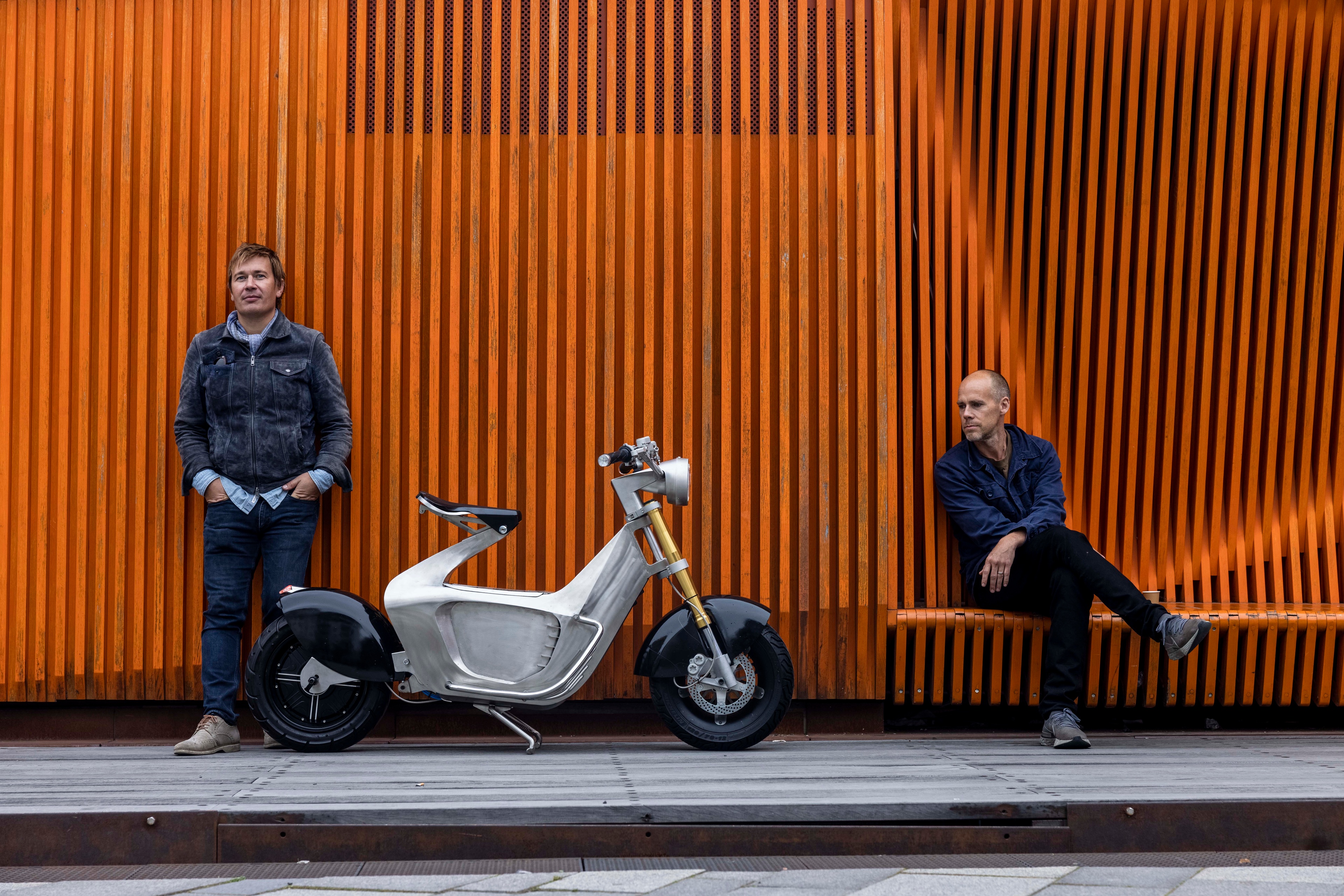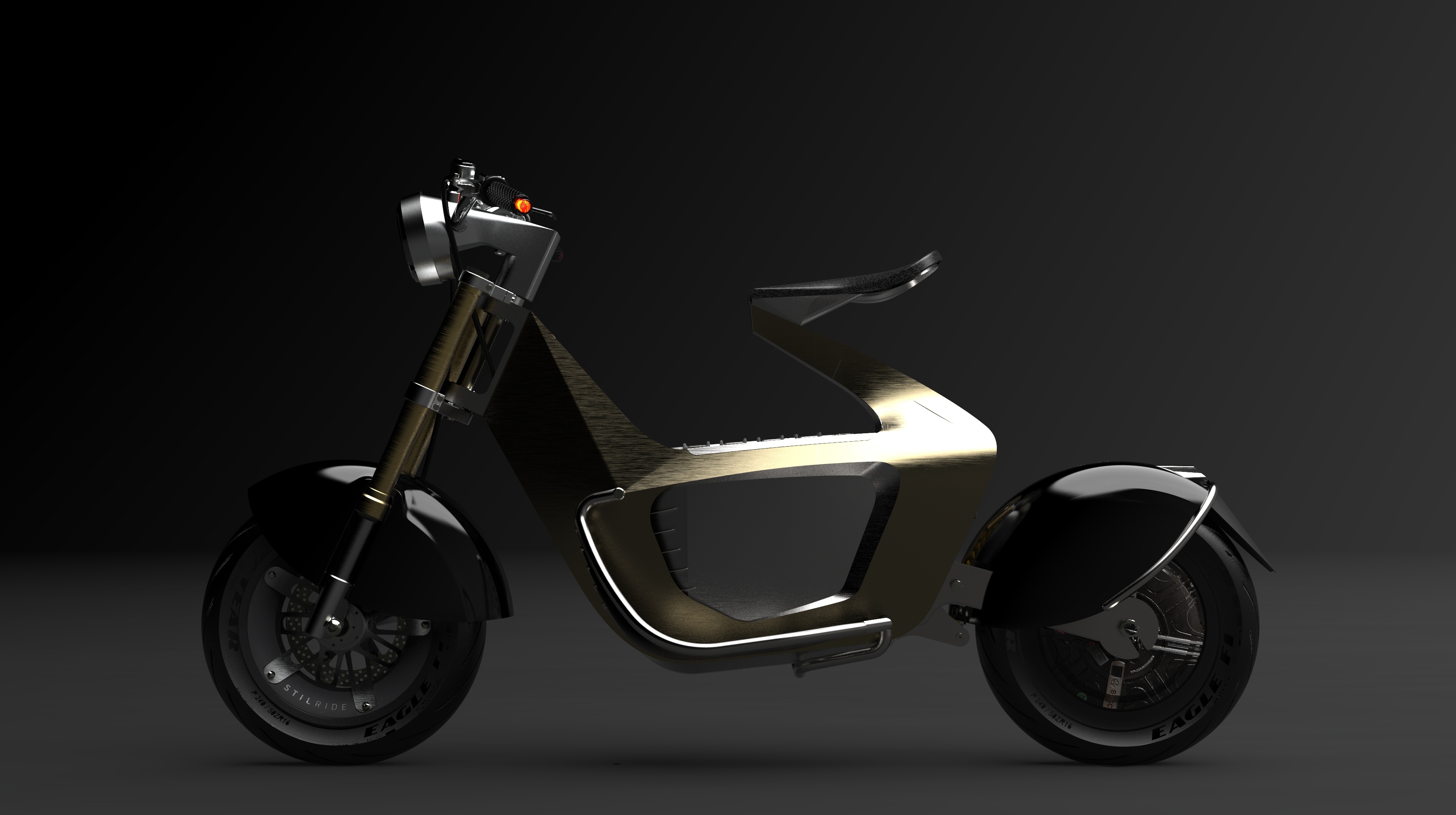Case
Industrial steel origami behind sustainable electric scooter
Semcon has been collaborating with the Swedish innovation firm Stilride, which is soon to debut its first electric scooter – the SUS1 – based on a new sustainable steel-folding technology. Starting in the prototype phase, Semcon has contributed its expertise in several key areas to develop and validate the various concepts before serial production begins.

CustomerStilride
IndustryMobility
CompetencesMechanical EngineeringDesign & User ExperienceSimulation & Analysis (CAE)
Background
When it comes to various ways of refining and shaping steel, there are generally two approaches to choose from: The first allows only a low level of refining, where mechanical shop technicians weld and cut steel, having to be satisfied with straight lines and limited freedom of design. The second entails high refinement capabilities, but requires significant investments in tools that form-press the steel, while also requiring long lead times.
Efficient and sustainable method to shape steel
Stilride’s technology, in contrast, is based on folding the steel, which opens up impressive opportunities for advanced design without significant investments. Steel folding can be carried out in a machine shop using industrial robots and Stilride’s Stilware software, which also helps reduce carbon footprint. This innovation has already led to collaboration with companies in other sectors, and Stilride has set its sights on the huge potential in opening more eyes to the technology.
“Green steel origami, which is at the heart of our technology, is essentially an interaction between our will and that of the steel. If we push it too far then it ruptures, so we have developed our Stilware software to avoid material failure and stay within the contours of what the steel can do, says Tue Beijer, Stilride’s founder and continues:
“The software brings efficiency to the process by knowing what the steel can handle. While working to bring the SUS1 to market, we are at the same time exploring how the technology can lend itself to other sectors.”
The fruit of a research project
Stilride founders Tue Beijer and Jonas Nyvang were experimenting with bending curves in steel, which led to a research project financed by Vinnova. Together with Jernkontoret, the possibilities were further explored with the goal of creating a product to demonstrate the technology. The project was successful and once completed, Stilride brought in Semcon to develop the prototype for the SUS1 electric scooter.
From prototype to market
With the prototype complete, the next phase started, where the various concepts underwent development and validation. Semcon contributed by reviewing the specification requirements, identifying strengths and weaknesses in the construction and optimising everything from chassis stiffness and ergonomics to the electric drivetrain and shock absorption. Semcon also worked to find suppliers that could meet the stringent requirements for the electric scooter’s various components and custom solutions. Despite the fact that much of the project was created from the ground up, the team has maintained a fast pace. This fast clip is moving ahead, with the development of a preproduction scooter slated to reach the market in 2023.
“Our guiding vision has been ‘The world’s most sustainable and attractive electric scooter’. Such a vision sets high demands, which has proven to be extremely challenging but at the same time great fun, says Stefan Banér, project manager and product developer at Semcon Studios, as he continues:
“This scooter is not only unique in terms of its steel origami and low climate footprint- it is also highly advanced technically and features an interaction between all the various components that gives the driver a unique experience.”

Effective structures are sustainable
Minimising the weight of the electric scooter has been another goal of the collaboration. By optimising material geometries, Semcon has managed to achieve significant weight reduction, which means extended range and less material throughout. This also allows for high performance despite reductions in engine and brake dimensions. The efficient construction and savings this achieves on several components will further strengthen the SUS1’s environmentally friendly profile.
Semcon contributes expertise in the following areas
Technical project management
Mechanical concept development
Electrical performance simulation
Mechanical simulations and calculations
Electrical systems

